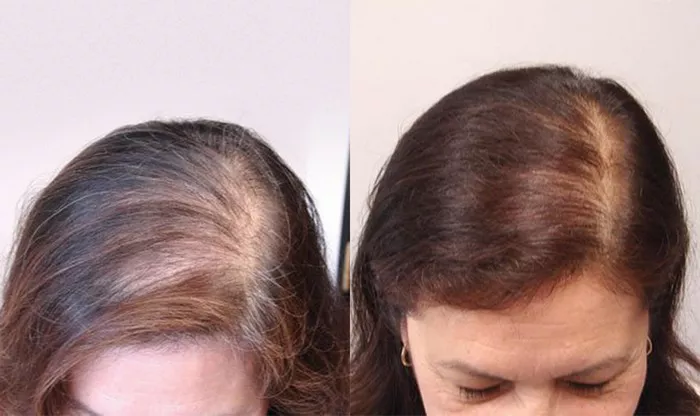Undergoing a hair transplant is a significant decision that can provide a permanent solution to hair loss. After the procedure, individuals may wonder about using hair fibers to enhance the appearance of their newly transplanted hair. In this article, we will explore whether it is safe and appropriate to use hair fibers after a hair transplant and discuss essential post-transplant care to ensure the best results.
Recovery After Hair Transplant
The recovery period after a hair transplant is crucial for the success of the procedure. In the immediate post-operative phase, the scalp may experience redness, swelling, and mild discomfort, which typically subsides within a few days. It’s essential to follow the surgeon’s post-transplant care instructions diligently, which may include gentle washing, avoiding strenuous activities, and refraining from scratching or touching the transplanted area. The newly transplanted hair grafts will gradually shed in the weeks following the procedure, but this is a normal part of the healing process. New hair growth usually starts within a few months, and full results can be expected within a year, providing a permanent solution to hair loss.
How long does it take for hair transplant results to appear?
After a hair transplant, the initial results usually become visible within 3 to 4 months. During this period, the newly transplanted hair goes through a shedding phase, which is a normal part of the healing process. Subsequently, new hair growth begins, and patients typically notice significant improvement in hair density and coverage around 6 to 9 months post-transplant. However, it can take up to a year or more for the full and final results to be visible. Patience is key during this time, as hair transplant results continue to improve over the following months, providing a natural and permanent solution to hair loss.
What is Hair Fiber?
Hair fibers are cosmetic products designed to conceal hair thinning and bald spots temporarily. They are made from tiny, natural or synthetic fibers that closely resemble human hair. Hair fibers adhere to existing hair strands using static electricity, creating the appearance of thicker and fuller hair. When applied to areas with thinning hair or bald patches, the fibers blend seamlessly with the natural hair, making the hair appear denser and more voluminous. Hair fibers come in various colors to match different hair shades and are a popular option for those seeking an immediate cosmetic solution to improve the appearance of their hair.
What do hair fibers do?
Hair fibers are designed to provide a temporary cosmetic solution to hair thinning and bald spots. When applied to areas with thinning hair or visible scalp, hair fibers adhere to existing hair strands using static electricity. This creates the illusion of thicker, fuller hair by filling in the gaps and covering exposed scalp areas. Hair fibers blend seamlessly with natural hair, making it look denser and more voluminous. They are available in different colors to match various hair shades, ensuring a natural-looking result. Hair fibers can boost confidence and self-esteem by instantly improving the appearance of hair, making them a popular choice for individuals with hair loss concerns.
Can hair fibers be used after hair transplant?
Yes, hair fibers can be used after a hair transplant, but it is essential to follow the advice of the hair transplant surgeon. After a hair transplant, the newly transplanted hair grafts need time to heal and establish their blood supply. Once the surgeon confirms that the healing process is progressing well and there are no complications, hair fibers can be applied to the existing hair strands surrounding the transplant area. Care should be taken to avoid direct contact with the transplanted grafts to ensure they are not disturbed during the early recovery phase.
Tips for Using Hair Fibers Post-Transplant
Using hair fibers after a hair transplant can help enhance the appearance of the transplanted hair. Here are some tips for using hair fibers post-transplant:
1. Gentle Application:
Apply hair fibers gently to the existing hair strands surrounding the transplant area. Avoid direct contact with the transplanted grafts to prevent any disturbance during the early recovery phase.
2. Choose Safe Products:
Select hair fibers specifically designed for cosmetic use and free from harmful chemicals. Quality hair fibers should not interfere with the healing or growth of the transplanted hair.
3. Match Hair Color:
Choose hair fibers that closely match your natural hair color for a seamless and natural-looking result.
4. Avoid Overuse:
Use hair fibers sparingly to avoid any buildup or excessive weight on the hair. A little goes a long way in achieving a natural appearance.
5. Follow Post-Transplant Care:
Continue following the post-transplant care instructions provided by your surgeon to ensure the best possible outcome for your hair transplant.
Remember that hair fibers offer a temporary cosmetic solution, and the full results of a hair transplant will take time to become visible. With proper care and patience, the transplanted hair will grow naturally, providing a permanent and natural solution to hair loss.
Conclusion:
Using hair fibers after a hair transplant can be a temporary solution to enhance the appearance of transplanted hair during the early recovery phase. However, it is crucial to follow your surgeon’s advice and allow sufficient time for the grafts to heal and grow naturally. Hair transplant procedures offer a permanent solution to hair loss, and with proper post-transplant care, you can achieve natural and long-lasting results that boost your confidence and restore a fuller head of hair.


